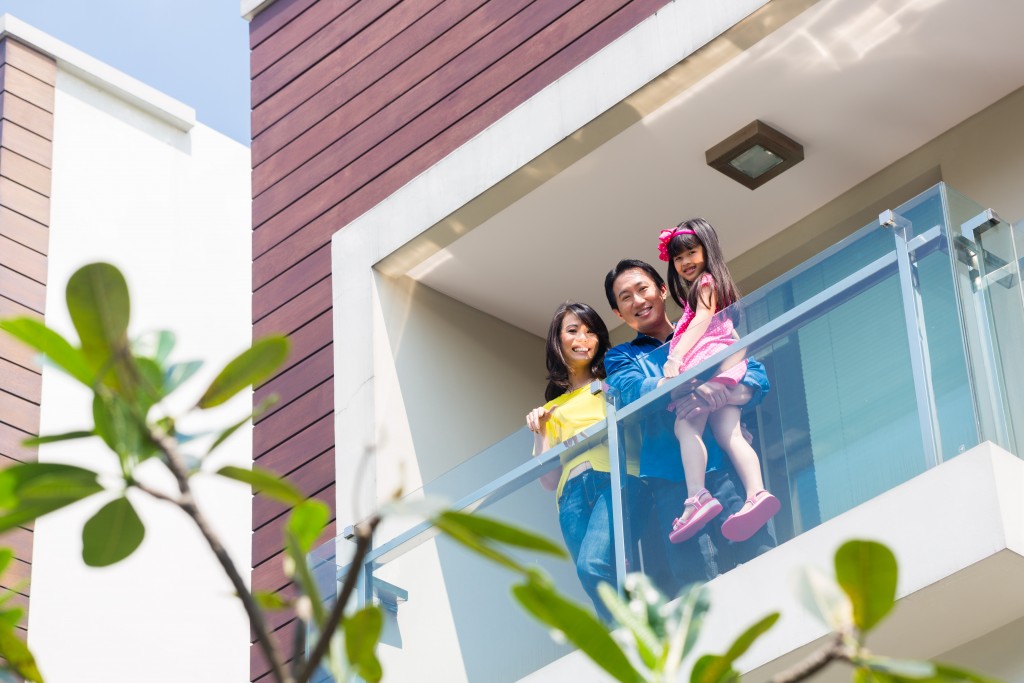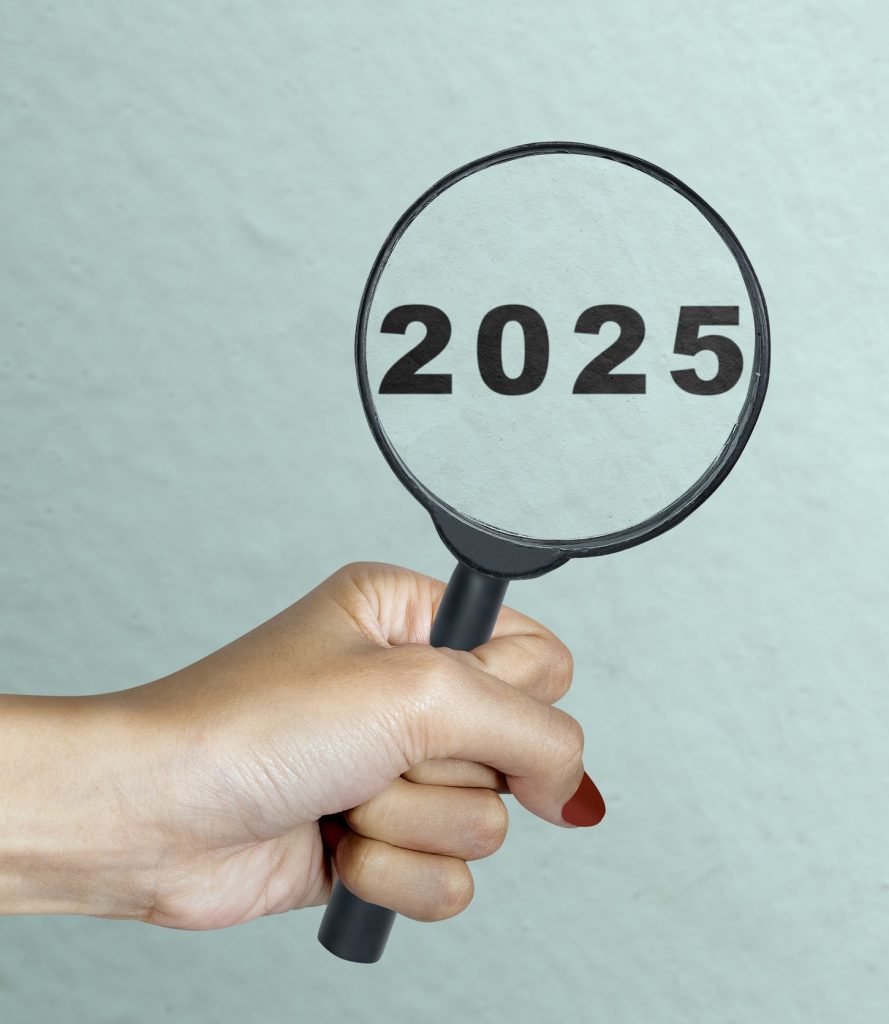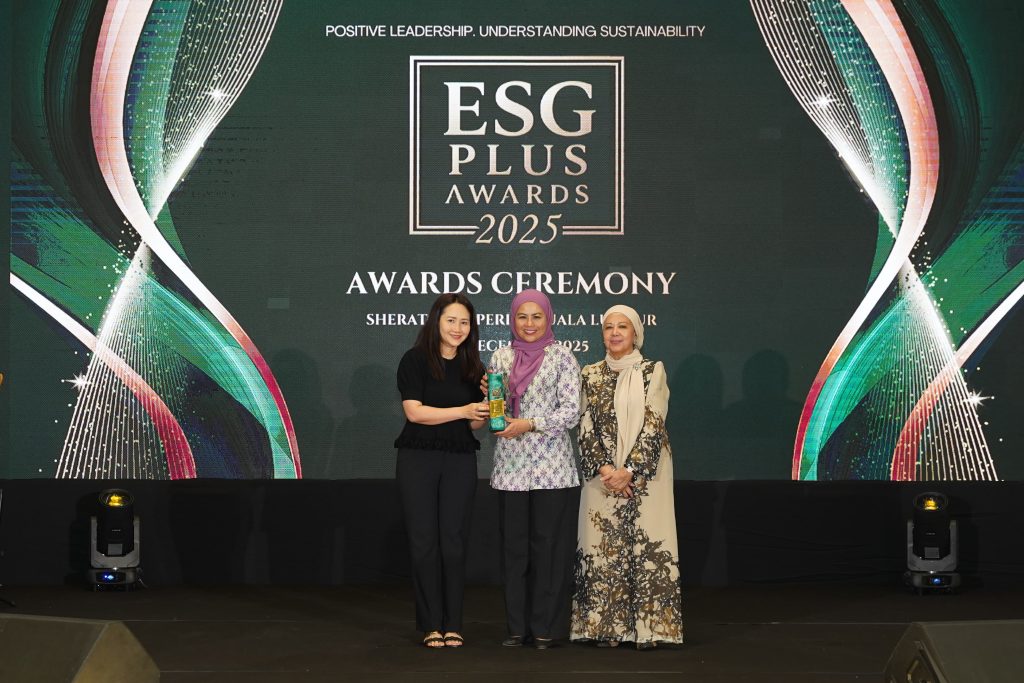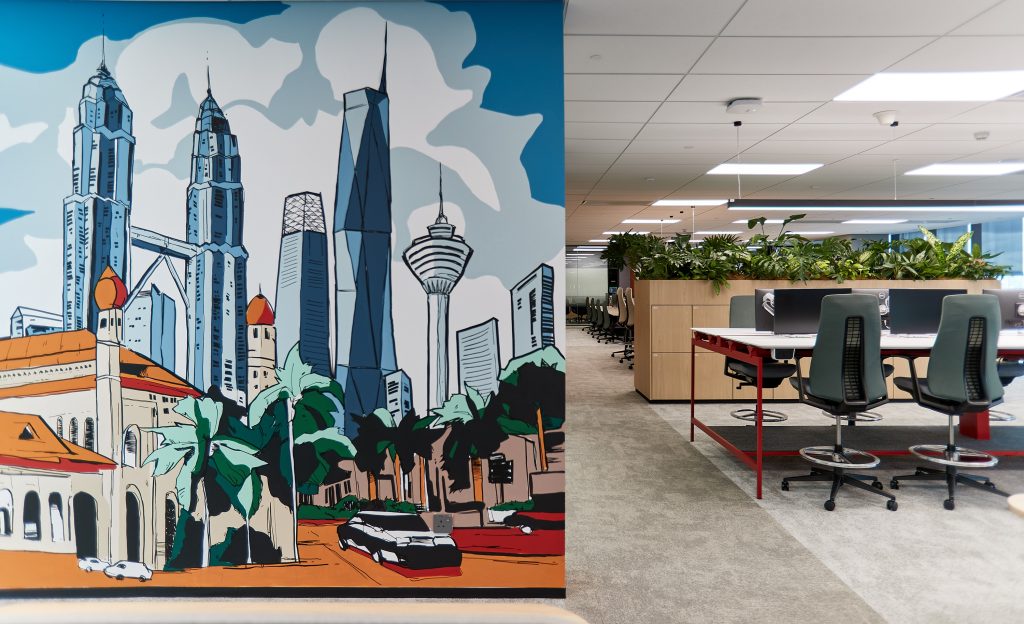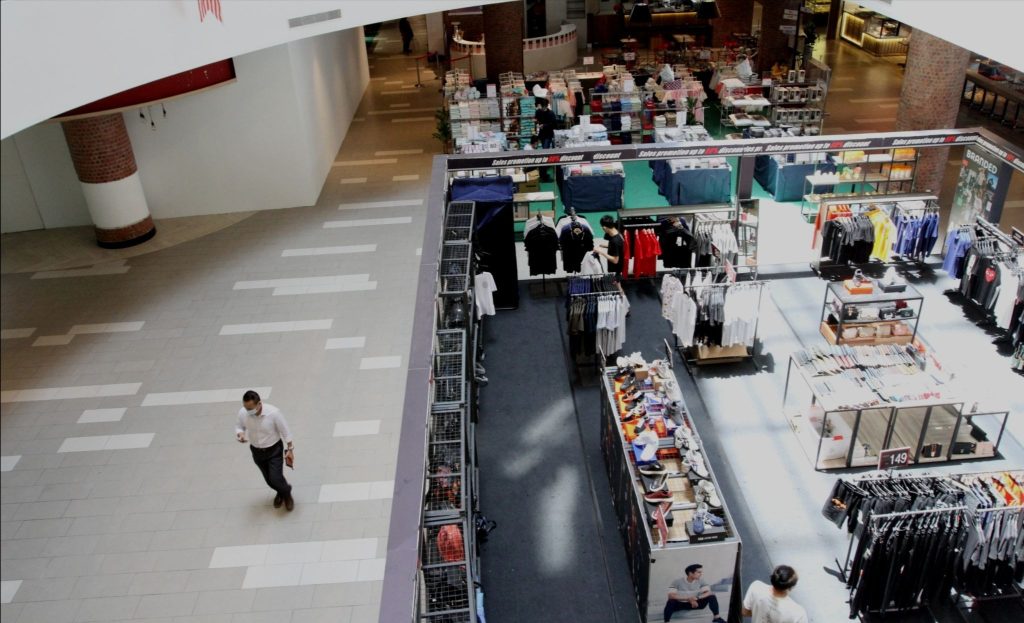A smaller unit in a smaller world
By Yanika Liew
As Malaysia sees a slowdown in population growth, families across the nation are getting smaller and smaller. Swap out the stereotypically large landed properties for high-rise units, because family homes may mean something different today. Between the necessity of space and privacy, architects navigate new strategies for family-friendly homes.
“The trend of multi-generational homes is on the rise due to various factors such as economic pressures, changing family structures and cultural norms,” Veritas Design Group principal and director Azril Amir Jaafar said.
In Malaysia, as with many other cultures, it is common for multiple generations to live together under one roof to provide support and care for each other.
In addition to these cultural factors are the new economic pressures, such as the rising cost of housing, childcare and healthcare, which has made it more challenging for families to afford separate homes for each generation, Azril said.
Moving in together can reduce financial strain and provide a sense of security, that is if the mental toll doesn’t kick in first.
“Changing family structures, such as an increase in single-parent households or an ageing population, have also contributed to the rise of multi-generational living arrangements. Families are often coming together to provide care for ageing parents or to help support adult children who may be struggling financially,” Azril said.
The trend of multi-generational homes is likely to continue as families seek ways to navigate the challenges of modern life and support each other through the ups and downs of daily living, he pointed out.
“Thoughtful design can reduce the need to seek refuge outdoors for openness such as in parks or malls. With more quality time spent indoors, it would help in one way or the other, to mitigate social problems among younger generations,” Veritas Design Group senior associate Suhaimi Baba said.
Especially with smaller family units without an outdoor space, an abundance of natural light and ventilation.
“This could be achieved by maximising natural light and ventilation through large windows, skylights and well-placed openings to create a healthy and uplifting living environment. One would be surprised by how much difference it would make for a person to spend his or her time indoors in a naturally lighted room. Such quality spaces with sufficient light and ventilation could certainly encourage indoor time,” he said.
“Architects and home builders are increasingly incorporating design features to accommodate multigenerational living, such as separate living areas, dual key units, and adaptable spaces that can serve different purposes over time,” Suhaimi added.
Bedrooms should be designed as sanctuaries where individuals can retreat for privacy, relaxation and personal time. Whenever feasible, there should be ensuite bathrooms in bedrooms to provide occupants with exclusive access to bathroom facilities, enhancing privacy and convenience, especially in larger households.
A large living hall can be useful for sleeping areas for the children, Suhaimi noted. The dual-key unit with granny flats within the property provides separate living quarters for older adults or extended family members. These accessorised dwelling units could offer independence and privacy while maintaining proximity to the main residence.
“The COVID-19 pandemic has highlighted the importance of designing homes that support remote work, distance learning and indoor recreation allowable by integration of technology. Designers must adapt their designs to accommodate these changing lifestyle needs, incorporating home office spaces, flexible layouts and enhanced ventilation systems to promote health and well-being,” Suhaimi pointed out.
An additional feature of new units is flexible spaces with open layouts that can be easily adapted for different purposes. Smaller units should have big windows and sliding doors to maintain visual connections to external ones as well as encourage natural light and make spaces appear to be bigger, Azril said.
Well-utilised space
Creating a family-friendly environment in a smaller unit requires innovative design solutions and thoughtful utilisation of space.
“Good interior design could be a great tool to maximise available space by creatively organising the layout to optimise functionality and flow. Open-plan layouts and flexible furniture arrangements could be the approach to creating multifunctional zones within the unit. Creative space organisation comes with the utilisation of the room height, making use of vertical space by incorporating loft sleeping bunkers or bunk beds to maximise floor area while providing separate sleeping quarters for family members,” Suhaimi said.
Multi-purpose furniture is a rising trend in small units. Furniture with multiple uses is a space saver when it comes to proper space utilisation. Families can invest in multifunctional and foldable furniture such as sofa beds, dining tables with storage and foldable desks.
It is also important to utilise vertical storage solutions such as wall-mounted shelves, cabinets, and racks to maximise storage capacity without encroaching on floor space. This helps keep clutter at bay and maintains a tidy living environment, Suhaimi noted.
Families can use open shelving instead of bulky cabinets to create a sense of openness and visual continuity in smaller spaces. In addition, displays of personal collections or belongings can be an artful injection of personality and character to the space.
“By implementing these strategies, even smaller units can be transformed into family-friendly environments that maximise functionality, comfort and style. The key lies in thoughtful design solutions that prioritise efficiency, flexibility and aesthetics to meet the diverse needs of modern families,” Suhaimi said.
“Families are constantly evolving and changing, so designing a home that can adapt to their needs over time is essential. This includes considerations for future additions to the family, ageing in place, or accommodating changing lifestyle preferences,” Azril pointed out.
With the integration of technology into home design, designers must consider the incorporation of smart home systems, energy-efficient appliances and connectivity solutions to enhance convenience and comfort for residents while ensuring ease of use and compatibility.
“Ensuring the safety and security of family members is paramount in home design. Designers must consider features such as fenced compounds, CCTV surveillance, guard sentries and secure entry systems to provide peace of mind for residents, especially in urban environments,” Suhaimi added.
Designers must ensure that family-friendly homes are inclusive and barrier-free to accommodate residents of all ages and abilities, as homes that are safe and accessible to individuals with disabilities present a challenge that requires careful consideration of layout, circulation and the incorporation of universal design principles.
A physical connection to the outdoors within the unit such as balconies can provide additional respite that enhances the experience and enriches activities among the family members such as small gardening at the pocket garden on the balcony, Azril noted.
Childhood growth and development rests on outdoor play, which has been shown to promote balance, coordination and even social skills.
This is where common facilities come in, Suhaimi said. “The housing scheme layout overall should offer a range of amenities within the residential complex, including playgrounds, parks, swimming pools and fitness centres, to cater to the diverse needs and interests of families and promote an active and healthy lifestyle,” he pointed out.
By choosing properties with these features, Suhaimi noted that families could create a nurturing and supportive environment that promotes family bonding, well-being and overall happiness.
Challenges to family-friendly homes
However, while an open floor plan allows for easy communication and interaction between family members, it can also pose challenges for multi-generational families. Azril noted that the lack of defined spaces can make it difficult to create separate areas for different activities or to maintain privacy.
“Consider adding soundproofing elements to shared walls or floors to reduce noise transfer between different areas of the home. This can help to maintain a peaceful and quiet environment for everyone,” Azril said.
Family members can personalise their own living space with decor, furniture and personal belongings. Having a space that reflects their personality can create a sense of ownership and privacy.
“Typically in urban settings, space constraint is the utmost challenge. In urban settings, limited land availability and increasing population density pose significant challenges in providing adequate space for family-friendly homes. Designers must innovate to maximise the efficient use of available space without compromising on comfort or functionality,” Suhaimi said.
“Escalating land costs and construction expenses also contribute to higher selling prices for homes, putting pressure on designers to balance affordability with quality and functionality in their design,” he added.
The increase in construction costs can also impact the selection of finishes and materials for family-friendly homes. Designers must carefully consider cost-effective yet durable options to maintain quality while staying within budget constraints.
“Set clear boundaries and expectations for sharing common areas and respecting each other's privacy. This could include establishing rules around quiet hours, privacy rights and shared responsibilities within the home,” Azril said.
Regarding a multi-generational home, conflicts and privacy concerns are part and parcel of the deal. These can be challenging and have nothing to do with the home's design. Encourage everyone to express their needs and preferences regarding privacy and work together to find solutions that accommodate everyone, he added.
With growing families come more belongings and the need for efficient storage solutions, designing adequate storage spaces that are both functional and aesthetically pleasing can be a challenge, especially in smaller homes or apartments. There are also considerations for wiring, outlets and data connectivity, Azril said.
Suhaimi went one step further to promote the idea of sustainability in the family home.
“In a family-friendly home design, sustainability and a strong connection to the outdoors are essential considerations for creating healthy, environmentally responsible living spaces," he added.
It was the duty of designers and architects to embrace sustainable design principles to minimise environmental impact and promote resource efficiency throughout the home's lifecycle. He pointed to the use of eco-friendly materials, energy-efficient systems and maximising natural daylighting and ventilation to reduce energy consumption and promote occupant well-being.
“A dedicated area within the home for recycling and waste management should be provided to make it easy for family members to sort and dispose of recyclable materials responsibly. Incorporate bins or containers for different types of waste and consider integrating composting facilities for organic waste. There is just too much plastic in this world. Recycle, reuse, rejuvenate!” Suhaimi said.
In navigating these modern challenges, designers must employ a holistic approach that balances functionality, aesthetics, sustainability and affordability to create family-friendly homes that meet the evolving needs of contemporary households.
“By embracing innovation, creativity and adaptability, designers can overcome these challenges and create living spaces that enhance the quality of life for families now and in the future,” Suhaimi added.
Stay ahead of the crowd and enjoy fresh insights on real estate, property development, and lifestyle trends when you subscribe to our newsletter and follow us on social media.

